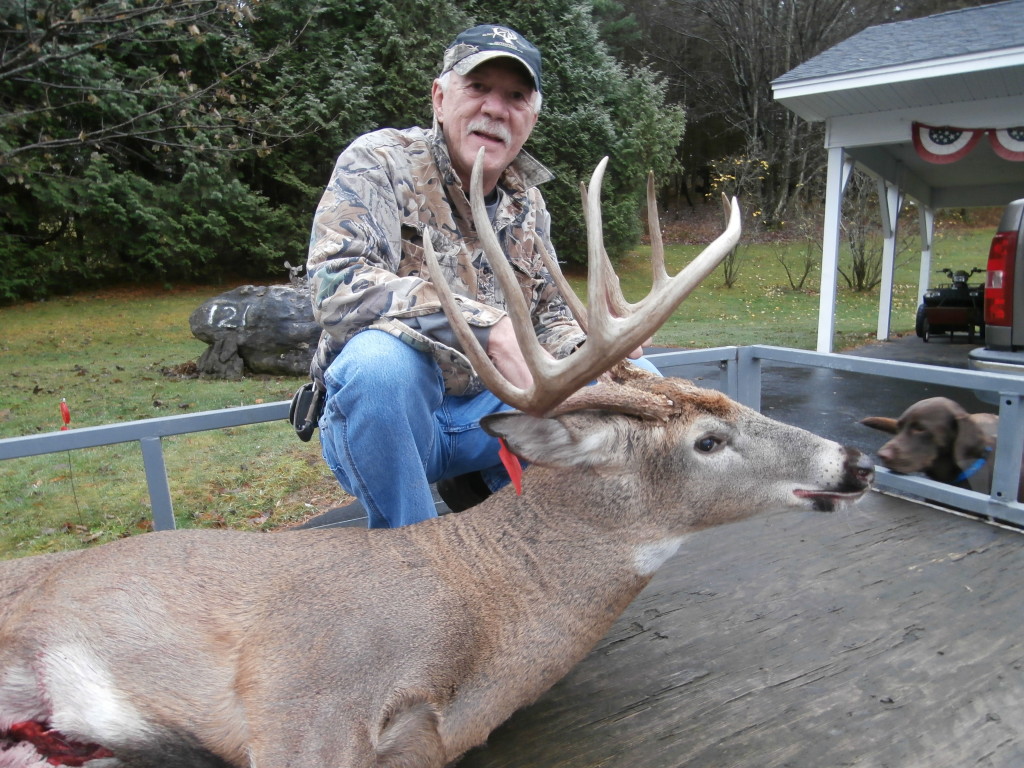This year the Hoosic River Watershed Association is celebrating its 30th year of caring for the Hoosic River and its basin. Lauren R. Steven had an excellent commentary in the Berkshire Eagle on January 11, 2016 entitled, A busy 30th is coming for Hoosic River group”. In it he discussed HooRWA’s many ongoing projects from its confluence with the Hudson River in New York to North Adams. Hoorah, for HooRWA!
Last fall I attended a HooRWA meeting wherein they discussed the status of PCB’s in the river’s crayfish and trout population. I covered it in my November 8, 2015 column. At that meeting they also honored the late Ernest LeClaire of Williamstown. He was a founding member of HooRWA as well as the Hoosuck Chapter of Trout Unlimited and, to quote HooRWA Board Member Stevens, he was a “great friend of the environment and many people.”
One of Ernie’s hobbies was wood-working, and at that meeting was displayed his gorgeous wood carving of the HooRWA logo. It shows a flying blue heron, a kayak paddler and a fly fisherman.
During that meeting, Stevens mentioned that HooRWA would like to have a bench in Ernie’s honor placed somewhere along the banks of the Hoosic River, preferably in his home town. The land, formerly occupied by the Spruces Trailer Park was mentioned. Donations for such a bench can be made through its website (http://hoorwa.org) or by mail to HooRWA, P.O. Box 667, Williamstown, MA 01267.
Ernie was an esteemed member of Trout Unlimited who was awarded the TU Silver Trout Award, TU’s highest national award at the time, for his dedication to conserving cold, clean waters and the critters that live in them. For years, he was a volunteer in the UMASS Acid Rain Monitoring (ARM) Program. (I have a picture of Ernie, Ed Driscoll of Adams and myself presenting the late Senator Ted Kennedy an ARM tee-shirt up on Mount Greylock).
Ernie was a close friend of the late Al Les, of North Adams, who was named the Father of Catch and Release Fishing in Massachusetts. Les received the first Berkshire County League of Sportsmen (BCLS) Silvio O. Conte Sportsman of the Year Award in 1984. In addition to being Al’s closest fishing partner, Ernie accompanied him state-wide selling the concept of catch and release, even testifying at the Massachusetts Statehouse in Boston and the DFW Headquarters in Westborough.
Ernie passed beyond the river bend in 2014. He was a close friend who I’ll always remember flyfishing our local rivers, wearing his cowboy hat and red bandana. He should have been recognized by the BCLS but his name was never submitted, possibly because he shied away from such notoriety. Having a bench named in his honor along the river that he loved so much would be a fitting tribute. Better yet, as some have suggested, name the park after him. *****
Tom Decker, owner of Pete’s Gun Shop in Adams recently announced that they are offering one day monthly Basic Firearms Safety classes for the Massachusetts LTC or FID. These classes are both NRA and Massachusetts State Police certified. Their next class is April 10 starting at 8:30 am at the Cheshire Rod & Gun Club. It will be a live fire class, as required by the NRA. Free lunch will be provided. Call Pete’s Gun Shop at 413-743-0780 to register. *****
First-time hunters who wish to purchase a Massachusetts hunting or sporting license must first complete a Basic Hunter Education Course. Such a course is scheduled at the East Mountain Sportsmen’s Club at 312 Henderson Road, Williamstown. The dates are April 4, 8, 11, 15, 18 & 22, from 6:00 to 9:00pm. For more information, call 508-389-7830.
These classes fill up quickly. Instructor Wayne McLain of Williamstown recently reported to the BCLS that 53 participants had signed up for his Cheshire Rod & Gun course which began last Monday. *****
A few announcements from DFW Western District (WD) Manager Andrew Madden: Last year, the Fisheries and Wildlife Board approved the hiring of Stewardship Biologists in each of the Wildlife Districts to address some of the responsibilities that come with DFW’s extensive land holdings. In the WD, Jacob Morris-Siege was promoted to that position from the position of Wildlife Technician. A graduate of UMASS, he has worked for the Division for 8 years. Last year, many miles of boundaries had been marked, 14 encroachments were addressed and the monitoring of Conservation Easements was greatly increased.
Also, the WD has hired 2 new Wildlife Technicians, Derek McDermott and Ray Bressette. McDermott, from Auburn, MA, has worked for the Division as a seasonal employee with the Atlantic Salmon Restoration Program for 7 years, conducting fish surveys, monitoring fish lifts and stocking salmon fry. He is in the process of finishing his degree in Environmental Science from Southern New Hampshire University.
Bressette, from Middlefield, is a recent graduate of Westfield State College with a degree in Environmental Science. He has previously worked as a volunteer with the Division, stocking pheasants, marking boundaries, and conducting stream surveys.
Both Derek and Ray will be spending a lot of time stocking fish this spring so look for them on the trucks.
The WD has some habitat projects in the works, re-leasing and pruning apple trees in a number of locations this winter. A habitat forest cut on the Farmington River Wildlife Management Area (WMA) is ongoing. They are also working towards implementing prescribed fires on some WMA’s. DFW has been successfully using fire at a number of sites throughout the State creating excellent grass and young forest habitat which benefit many species. WD staff has been training on prescribed fires and hopes to expand this program in our region.

![PART_1425258314341_IMG_20150228_163318247[1]](https://www.berkshireoutdoorsman.com/wp-content/uploads/2016/01/PART_1425258314341_IMG_20150228_1633182471-2-169x300.jpg)
